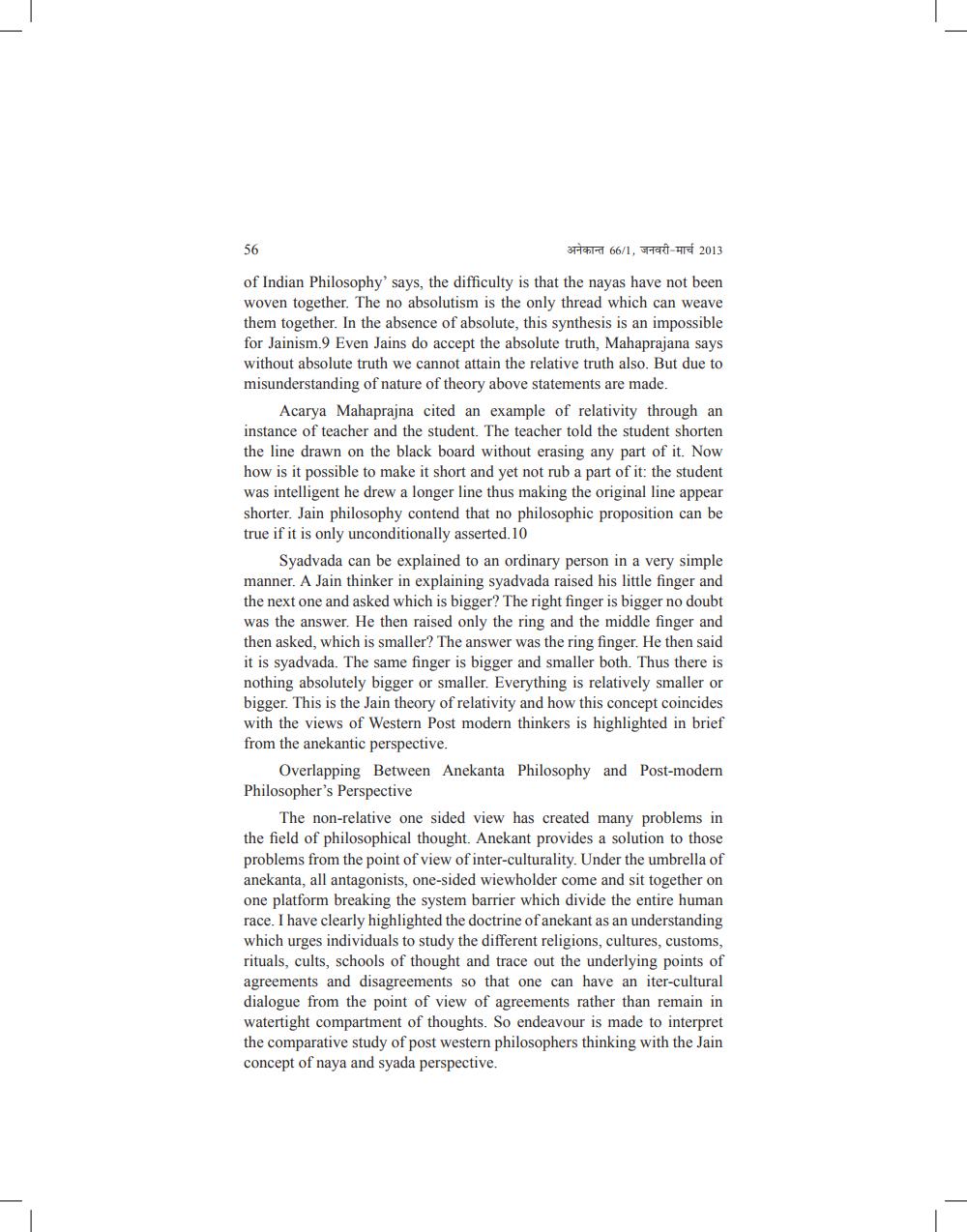________________
37-161 66/1, 91190-HE 2013
of Indian Philosophy' says, the difficulty is that the nayas have not been woven together. The no absolutism is the only thread which can weave them together. In the absence of absolute, this synthesis is an impossible for Jainism.9 Even Jains do accept the absolute truth, Mahaprajana says without absolute truth we cannot attain the relative truth also. But due to misunderstanding of nature of theory above statements are made.
Acarya Mahaprajna cited an example of relativity through an instance of teacher and the student. The teacher told the student shorten the line drawn on the black board without erasing any part of it. Now how is it possible to make it short and yet not rub a part of it: the student was intelligent he drew a longer line thus making the original line appear shorter. Jain philosophy contend that no philosophic proposition can be true if it is only unconditionally asserted. 10
Syadvada can be explained to an ordinary person in a very simple manner. A Jain thinker in explaining syadvada raised his little finger and the next one and asked which is bigger? The right finger is bigger no doubt was the answer. He then raised only the ring and the middle finger and then asked, which is smaller? The answer was the ring finger. He then said it is syadvada. The same finger is bigger and smaller both. Thus there is nothing absolutely bigger or smaller. Everything is relatively smaller or bigger. This is the Jain theory of relativity and how this concept coincides with the views of Western Post modern thinkers is highlighted in brief from the anekantic perspective.
Overlapping Between Anekanta Philosophy and Post-modern Philosopher's Perspective
The non-relative one sided view has created many problems in the field of philosophical thought. Anekant provides a solution to those problems from the point of view of inter-culturality. Under the umbrella of anekanta, all antagonists, one-sided wiewholder come and sit together on one platform breaking the system barrier which divide the entire human race. I have clearly highlighted the doctrine of anekant as an understanding which urges individuals to study the different religions, cultures, customs, rituals, cults, schools of thought and trace out the underlying points of agreements and disagreements so that one can have an iter-cultural dialogue from the point of view of agreements rather than remain in watertight compartment of thoughts. So endeavour is made to interpret the comparative study of post western philosophers thinking with the Jain concept of naya and syada perspective.




